Last Updated on April 5, 2025 by Owen McGab Enaohwo
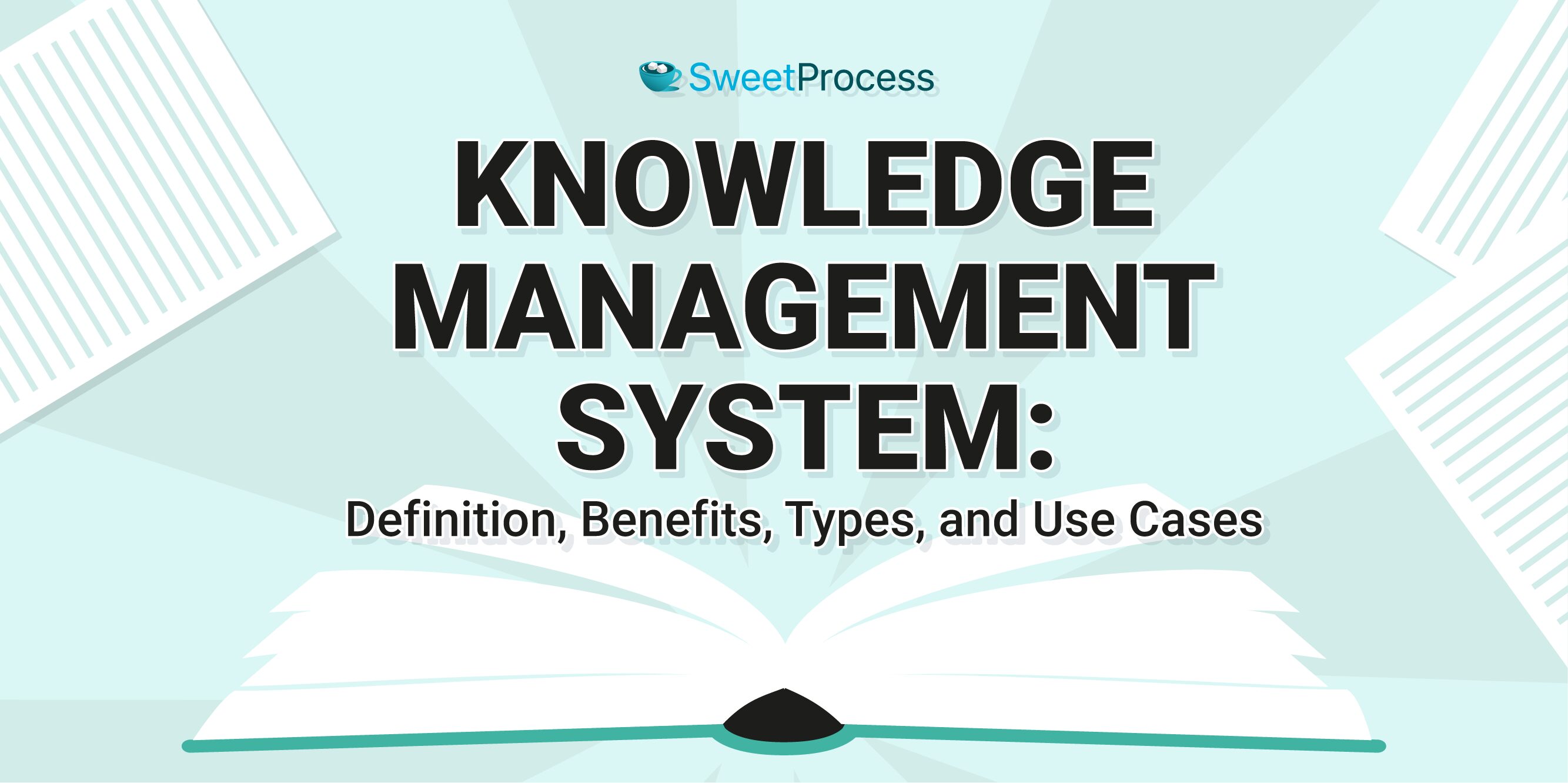
In today’s business world, knowledge is the currency of success, and without knowledge management, it’s impossible to control or understand the way information flows through your organization.
The reality is that your business must establish a robust knowledge management program to capture, store, and share its knowledge. This will enhance the effectiveness of your business in achieving its goals.
The truth is, that increasing efficiency is the goal of every business, whether you’re a startup establishing its foothold in the industry or a well-established business enterprise. As businesses around the world continue to look for ways to increase productivity, cut costs, and adapt to the changing business environment, the need to streamline operations has become paramount. Knowledge management systems have emerged as an invaluable tool in this regard, helping businesses to streamline operations, improve collaboration, and foster innovation. A report by McKinsey noted that businesses implementing a knowledge management system could minimize hours spent searching for information by 35% and increase business-wide productivity by 20 to 25%.
A knowledge management system is a secret sauce for businesses to achieve a sustainable competitive advantage and succeed in today’s knowledge-based economy. The need to capture and benefit from the existing knowledge in an organization has resulted in continuous advancement in technology.
Notable knowledge management platforms like SweetProcess exemplify the versatile applications of these systems across diverse business operations.
This article will guide you on how to choose the best knowledge management system for your business, thereby helping you to save time and cut costs.
If you’re ready to streamline your business and unlock its full potential, consider implementing a knowledge management system to benefit from improved collaboration, faster problem-solving, and enhanced employee productivity. To learn more, sign up for a 14-day free trial to see how it works. No credit card is required!
Table of Contents
What Is a Knowledge Management System?
Benefits of a Knowledge Management System for Your Business
Types of Knowledge Management Systems
How to Build a Knowledge Management System Using SweetProcess
Case Studies: Companies That Have Successfully Implemented SweetProcess for Knowledge Management
Type of Knowledge to Include in a Knowledge Management System
Knowledge Management System Use Cases and Examples
12 Key Features of a Knowledge Management System
7 Top Knowledge Management System Solutions and Tools
How to Measure the Effectiveness of Your Knowledge Management System
Optimize Your Business Operations with Knowledge Management Systems
What Is a Knowledge Management System?

Knowledge management is how businesses capture, organize, store, and share information with employees, customers, and vendors. With knowledge management, businesses can centralize all the knowledge and expertise related to it. Businesses implement knowledge management through dedicated IT-based software systems optimized for capturing, organizing, storing, and sharing knowledge.
When businesses prioritize implementing robust knowledge management processes, they unlock the potential to enhance workflows, dismantle internal information silos, and promote the customer experience through seamless self-service.
At the foundation of a knowledge management system is knowledge management, a systematic process of identifying, gathering, storing, evaluating, and sharing the wealth of information generated in day-to-day business operations.
An effective knowledge management system allows end-users to search for relevant knowledge, contribute their own knowledge, rate and comment on existing knowledge, and connect with other experts and peers. Consider a scenario where customer support agents grapple with information overload, causing delays that annoy waiting customers. This frustration can lead to customer dissatisfaction, a costly consequence for any business.
However, a well-implemented knowledge management system acts as a guiding light, empowering agents to access pertinent information promptly and enhancing the overall customer experience and ROI of customer success. Investing in a KMS is an investment in efficiency, productivity, and customer satisfaction. By creating a streamlined knowledge repository, businesses equip themselves to navigate the complex information terrain, fostering a culture of continuous improvement and innovation. Some common features of knowledge management systems include:
- FAQ information
- Google-like search functionality
- Community or forum features
- Built-in report
- Articles and tutorials on the “how-to” concept
- Case studies
- Team collaboration
- Seamless feedback system
Benefits of a Knowledge Management System for Your Business

Whether you lead a business supporting different clientele, managing retail product lines, or overseeing a help desk serving internal customers, a knowledge management system is your solution for efficiently delivering information to your employees, customers, and business partners. Here are some benefits of implementing a KMS in your business:
Prevent Tribal Knowledge
Tribal knowledge is institutional knowledge that is only known by a selected few, and it’s a two-edged sword that, when not captured and documented, poses a great danger to the organization. KMS prevents this by capturing tribal knowledge in easy and shareable formats.
Seamless Employee Onboarding
The days when you walk into a new office with nervous anticipation, only to be met with a grim HR person sternly outlining the rules while guiding you to your desk are long gone. Knowledge management systems empower employees with self-help and self-care, making onboarding, training, and knowledge preservation easier.
According to HBR, organizations with a functional onboarding process experience 62% greater new employee productivity and 50% greater new hire retention. A well-implemented knowledge management process leverages a knowledge base that serves as a single location for all business information, can help new hires quickly conduct data searches as needed, and offers a safe ecosystem for file management.
Consistent Implementation of Work Guidelines
In whatever sector your business operates, consistent implementation of work guidelines is critical for maintaining a unified brand image and providing consistent customer experiences. According to the 2018–2019 Global Information Security Survey by Ernst and Young, 34% of organizations find unaware employees to be the biggest vulnerability, which has huge financial implications and reputational damages to businesses.
A knowledge management system helps define standard work processes so that every employee knows the path they should take to complete tasks. It clearly explains every work process step, leaving no room for confusion or mistakes. Such clarity brings consistency in how employees work, which ultimately boosts their productivity and helps them work with confidence.
By establishing clear work guidelines, you ensure that everyone on your team is on the same page and working toward a unified business goal. Moreover, employees also become more accountable for their actions. Through this, the company can ensure that all employees have access to the same guidelines and procedures, promoting consistency in their work.
Increased Efficiency From Automating Repetitive Questions
A robust knowledge management system centralizes the business’s collective knowledge and eliminates repetitive requests, enhancing productivity dramatically. KMS stores frequently asked queries and their solutions in a single repository. In a customer support center where agents have to answer the same questions over and over again, a KMS can provide a centralized platform for storing and sharing answers to frequently asked questions, reducing the workload of agents and improving customer satisfaction.
This also enables employees to quickly get the right information without being forced to answer similar questions repeatedly. KMS automates routine queries, thereby leaving employees with greater independence in handling their tasks. This gives them self-confidence and provides enough time for them to be in the more critical activities of their jobs. In the US, about 78% of businesses invest more in self-service solutions that offer customers self-help portals and smart chatbots, enabling them to find answers independently.
Ease of Finding Information
A KMS provides a centralized platform for storing and sharing knowledge, making it easy for employees to find the information they need. This can lead to increased productivity and faster decision-making. In the latest Gartner poll on the priorities of customer support managers for the year 2022, almost 74% highlighted the importance of improving content and knowledge distribution for customers and employees in their support initiatives.
A single source of content helps in taking away the information fragments within an organization and streamlines knowledge presentation. The users are able to access any information they want, exactly when they want it, through simple categorization and very strong search features.
Closing of Knowledge Gaps
The saying “knowledge is power” bears great importance in today’s data-driven business world. KMS can help close knowledge gaps by providing a centralized platform for knowledge creation, sharing, and storing. This can lead to increased collaboration and innovation within the organization.
Improved Service/Product Quality
Through knowledge capture and feedback loops, knowledge management systems offer businesses tools to consistently refine their products, services, and operational processes. Knowledge management systems are invaluable in customer support service departments by efficiently addressing FAQs. Fast-tracking and addressing customers’ queries and concerns reduces call durations and helps businesses handle more requests by cutting time. Swift customer support not only results in improved service but also helps train agents to improve the quality of products and services.
Ease of Business Scaling
Businesses that want to scale their growth while connecting employees across teams and geographies make substantial investments in knowledge management systems. Effective knowledge management means scaling at ease, enabling businesses to maintain an exceptional customer experience without necessarily increasing their workforce. By leveraging knowledge management software, businesses can proactively intercept and redirect support tickets through self-service resources, effectively reducing the volume of requests in the queue.
Types of Knowledge Management Systems
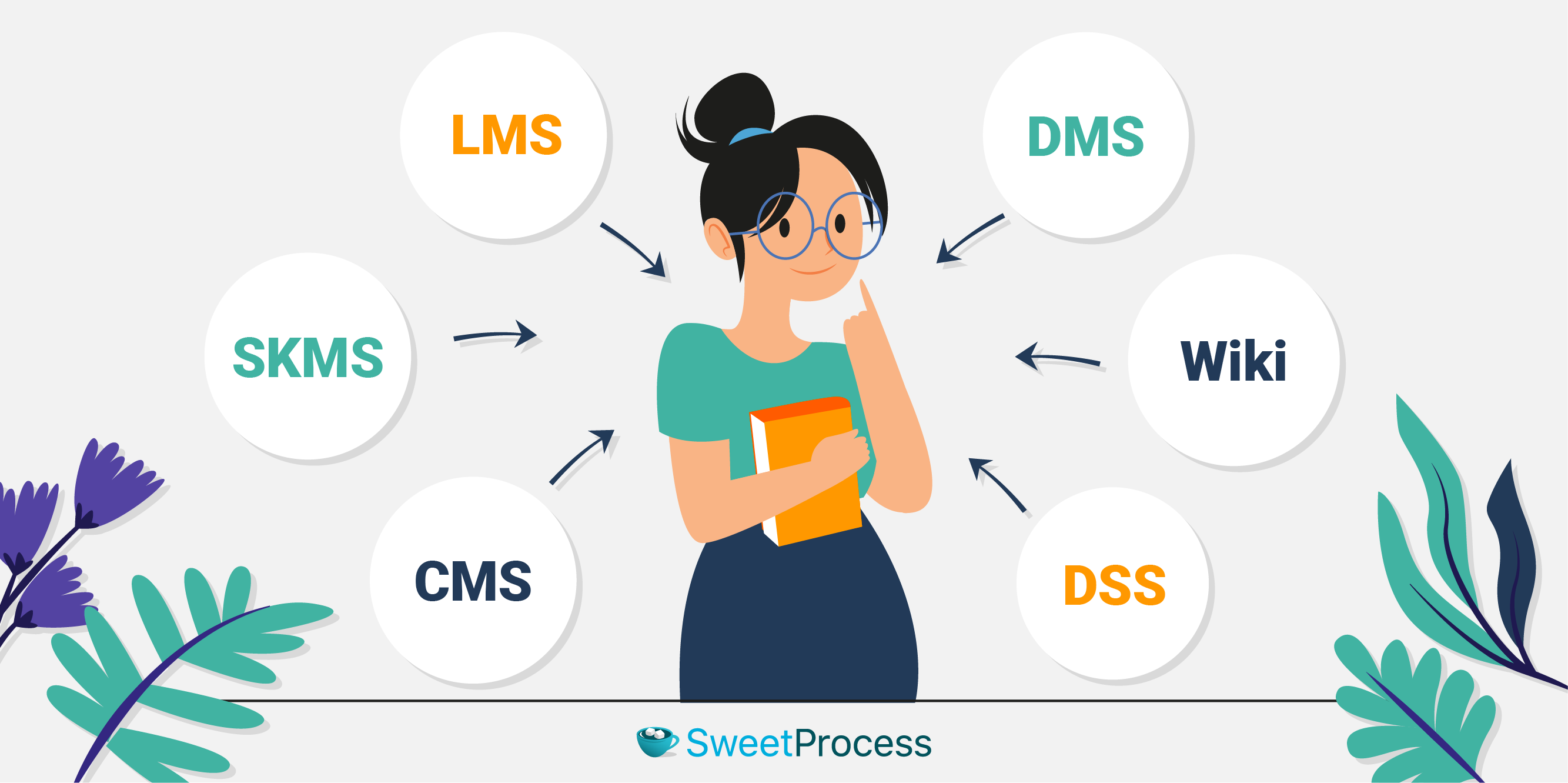
1) Document Management System (DMS)
Document management systems assist teams in organizing, managing, and sharing content. DMS helps businesses build virtual public and private knowledge bases to manage and distribute organizational knowledge and facilitate tracking, editing, and collaboration. Consider it as the digital file repository that replaces a physical filing cabinet. It functions to store and organize your business files for seamless retrieval. Examples include SweetProcess, Document360, and Concord.

2) Content Management System (CMS)
For every business, it is important to manage content and streamline information flow. As a business owner, if you are able to implement robust content management, your potential to maximize business operations definitely increases. It has become one of the basic tools for small business owners who want to position themselves well in the information age. With minimal technical skills, a CMS enables users to create, manage, and modify digital content. SweetProcess, WordPress, and Shopify are great examples of CMS.

3) Learning Management System (LMS)
Learning Management Systems (LMS) is a great tool for businesses that invest heavily in the skills development of their employees. LMS makes it seamless for businesses of all sizes to implement, manage, and scale employee training programs. Think of it as your organization’s training center, a virtual classroom where employees are able to access courses, training materials, and assessments.
Statistics show that using an LMS can boost employee retention rates to 92%. Through the use of LMS, business owners can always be sure that their teams have the right skills and knowledge at all times. Examples are Docebo, Adobe Experience Cloud, and Canvas.
4) Wiki
Wiki is like a shared electronic whiteboard on which various team members can put in, modify, and improve knowledge. It is designed for groups of people to easily record and share ideas through creating pages that are linked together. Just like the shared notebook in a brainstorming meeting, it captures all the ideas, insights, and good practices of each team member. A wiki promotes an open platform of conversation and reduces information silos so as to keep valuable knowledge out of isolated minds. Business owners can use a wiki to develop a knowledge base software that adapts to the collective knowledge of the team. Platforms such as Guru, Confluence, and Zoho Wiki are good examples of wikis.
5) Decision Support Systems (DSS)
DSS is a close friend in the changing environment of decision-making. It can also be viewed as a good adviser that gives useful information to business owners for decision-making. A DSS provides analytics of different information sources to assist in decision-making within complex scenarios. That is like hiring a business mentor who considers the market trends, consumer psychology, and internal company data for your decision-making. Examples include SAP BusinessObjects Business Intelligence, Salesforce CRM Analytics, and Qlik Sense.
6) Social Knowledge Management Systems
Information sharing is key for business growth. With SKMS, businesses can harness the natural trend among their employees, clients, partners, management, and vendors. Imagine this as an electronic water cooler, enabling people to discuss, raise questions, and work together in real-time. With social knowledge management systems, businesses can tap the collective wisdom of their teams, thus enabling more innovativeness and agility. These systems provide open channels for discussions, which foster team spirit and knowledge-sharing culture. Some examples of social knowledge management platforms are Elium, Knowledge Plaza, and Happeo.
How to Build a Knowledge Management System Using SweetProcess
SweetProcess offers businesses and teams unmatched customizations and systematization that allow them to scale, increase collaboration, and foster business growth. Here, we will explain and show you how to build a knowledge management solution using SweetProcess.
How to Build a Knowledge Management System in SweetProcess

Sign up for a SweetProcess Account
To begin, visit the SweetProcess website and register. You can also get a 14-day free trial.
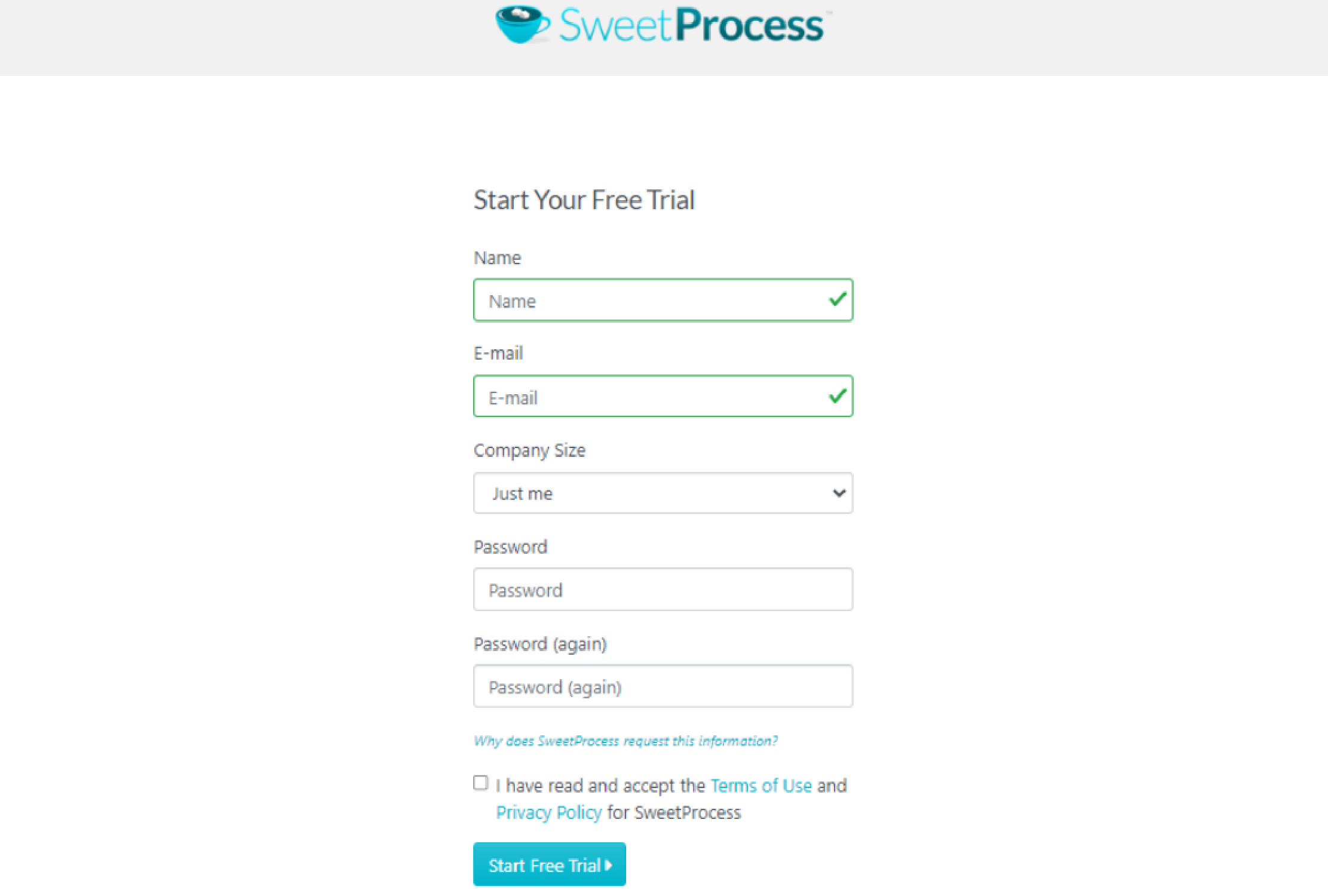
Create a Procedure
After setting up an account, the next step is to create a procedure.
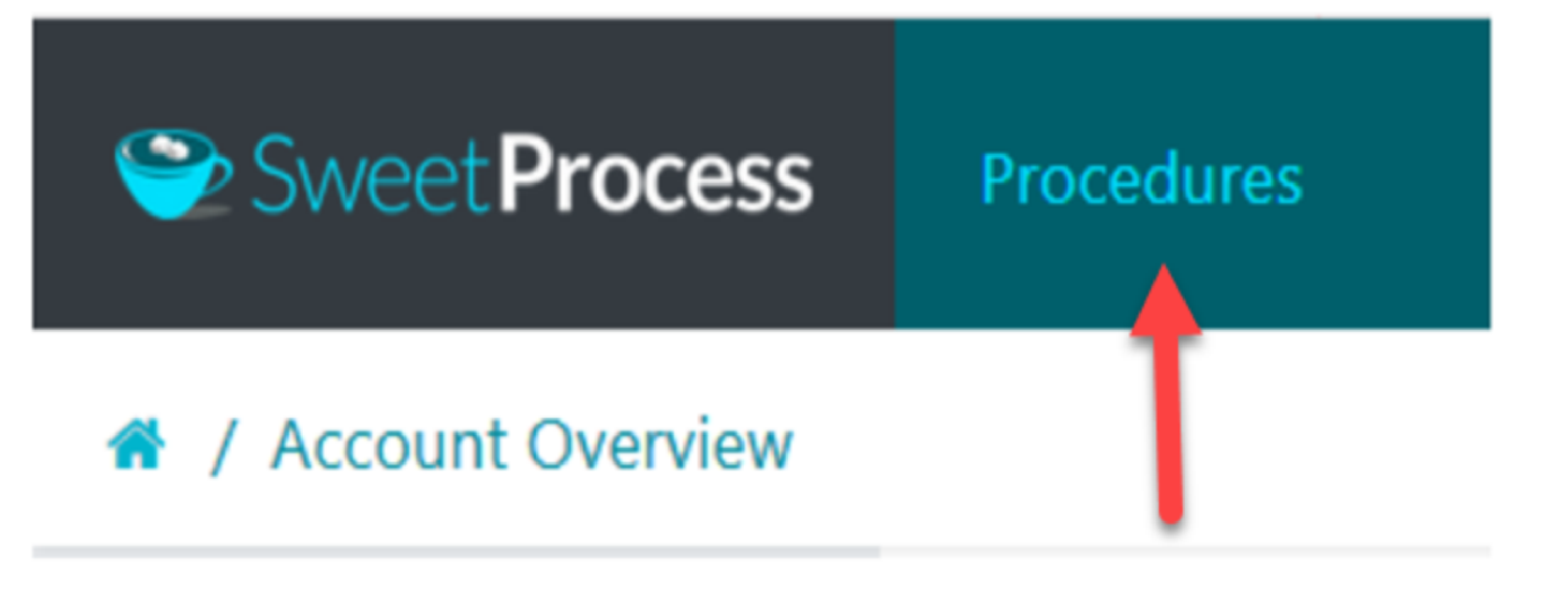
Here is the link to the step-by-step details on how to create your very first procedure.
Create a Policy
The next step is to create your first policy by following this link.

Create a Process

When documenting a big task, it makes sense to break it down into individual parts and then create a procedure for each of the tasks. After this, you can add these related procedures to the process. Follow this link for instructions on how to create a new process.
Add a Procedure to a Process

Here are the step-by-step details on how to add a new procedure to a process that you have already created. To add an existing procedure to a process that you have already created, follow this link.
Create a Team

Here’s a step-by-step guideline on how to create a new team.
Add an Employee to a Team
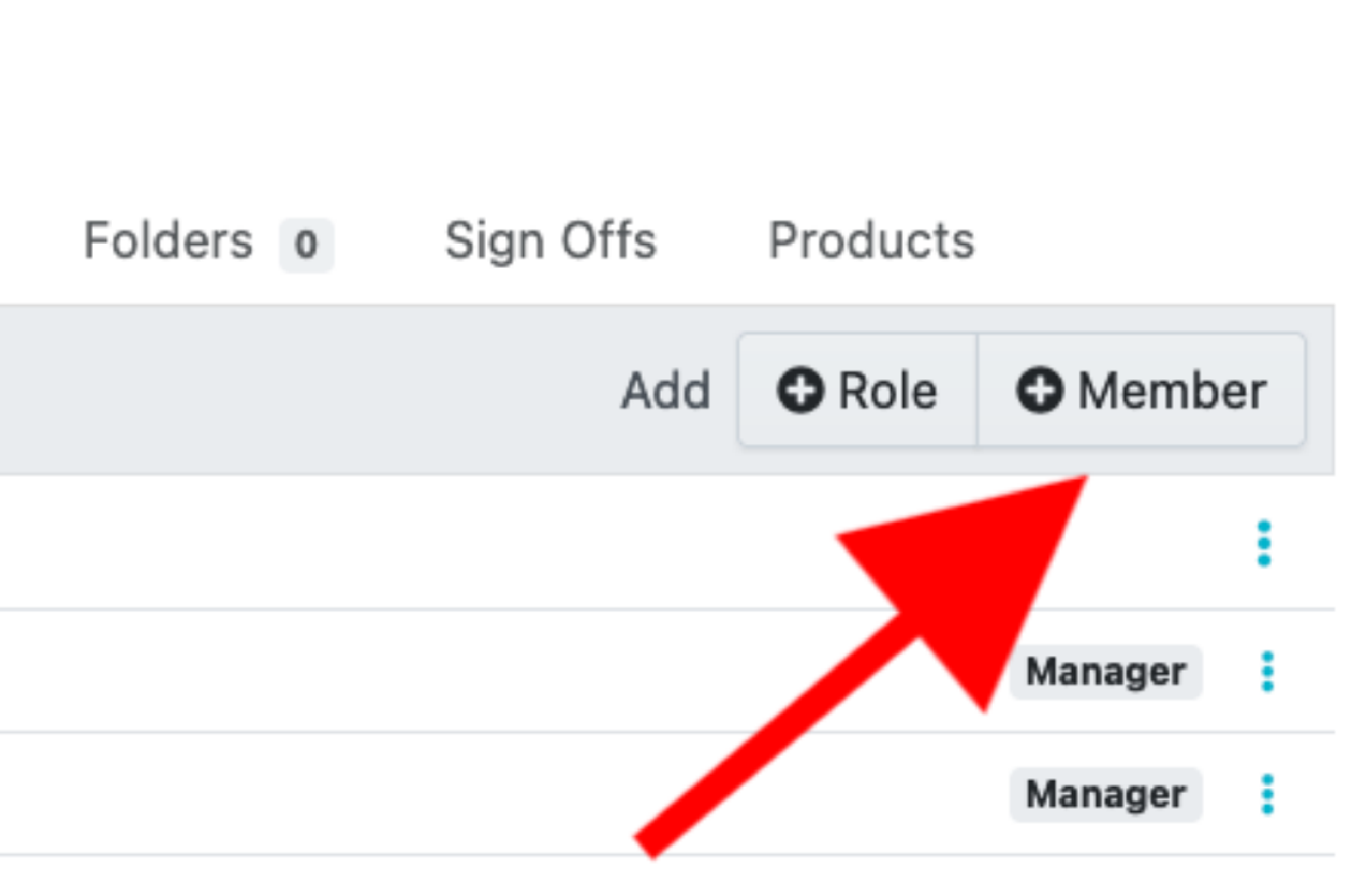
Click here for step-by-step instructions on how to add an employee to a team.
Make an Employee a Manager of a Team
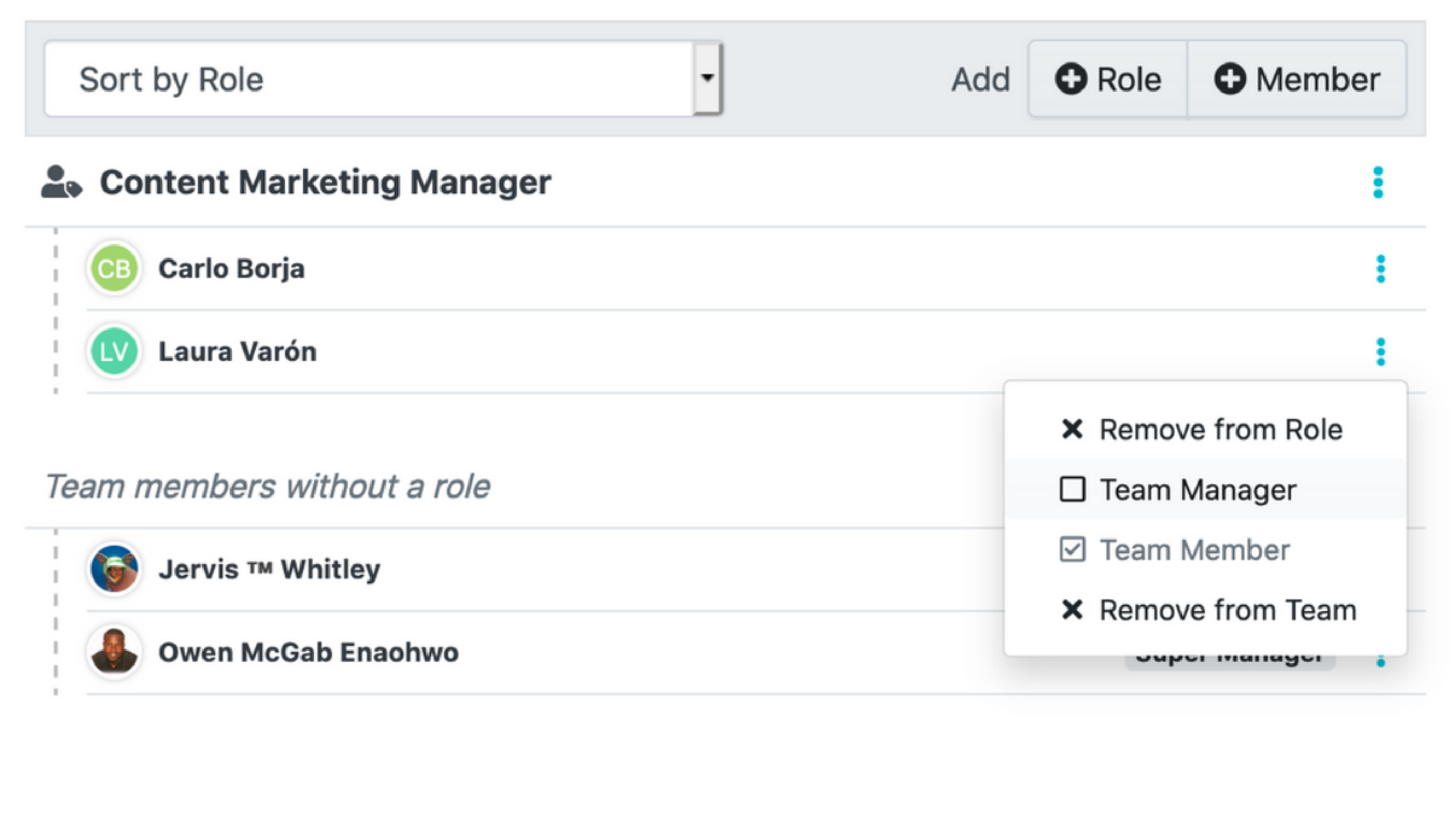
To make an employee a manager, click here for insights on how to make an employee a manager of a team.
Add a Procedure to a Team

Here is an overview of how to add a procedure to a team.
Add a Policy to a Team

Here are the step-by-step instructions on how to add a policy to a team.
Add a Process to a Team

The instructions on how to add a process to a team are detailed here.
Assign a Procedure as a Task to One of Your Employees

To add a procedure to any of your team members, follow these guidelines.
Assign a Process as a Task to One of Your Employees

Here is the link for the step-by-step instructions on how to assign a process as a task to an employee.
How Companies Have Successfully Implemented Their Knowledge Management Systems Using SweetProcess
Case Study 1: How SweetProcess Helped King Law Increase Its Productivity and Quality
King Law is a law firm that started from one office offering full-service litigation and has now grown into 14 different locations. As King Law grew, it faced some difficulties in managing its internal processes and workflows, with multiple employees working on different cases. This resulted in the lack of a centralized system to document and communicate their SOPs, causing errors, time wastages, and inefficiency.
However, when they decided to use SweetProcess, it became easier to create and organize their SOPs in one place and make them accessible to their staff members in all locations. SweetProcess was also utilized to assign tasks, track progress, and automate reminders and notifications.
The result: After the introduction of SweetProcess, the King Law team could have their policy in one place. Now, they broadcast the policy to all employees, and everyone does their tasks in the way approved by the company. Furthermore, employees now understand how to do things without waiting for other attorneys.
Don’t take our word for it. See what one of the managing partners, Brian King, has to say: “SweetProcess is the only program I’d start a law firm with today. If you have the right procedures and you combine that with the right team, there’s nothing that may limit you to how far and wide that you may go.”
John Hutchens, a senior associate attorney at King Law, also has this to say: “With SweetProcess, we don’t have to wait for that lag time that comes with feedback. Instead, you can simply go to SweetProcess, see steps, and execute accordingly.”
Case Study 2: How SweetProcess’s Systemization Streamlined Implant & Periodontal Therapy Operations and Compliance
Implant & Periodontal Therapy is a dental clinic that provides implant and periodontal services to over 5,000 patients at two locations.
Implant & Periodontal Therapy had challenges with its operations and wanted to streamline its business operations and lower costs. However, there was a problem: a struggle to expand because every process rested on one person. It became absolute chaos to manage tasks and activities, and when they launched three outlets and hired more than 25 employees, the problem became evident, and they needed help fast. They depended on a single expert to perform specific tasks, which brought about lots of phone calls between offices and other outlets trying to get help from the expert. To this end, they decided to tackle these problems by leveraging the SweetProcess knowledge management process. With SweetProcess, they were able to digitize and standardize their SOPs and make them multi-device compatible so that their employees can use them on any device.
SweetProcess was also used to create workflows, assign roles and permissions, and generate reports and audits. All employees were able to get answers to all their questions, and they could navigate the platform without asking for help. In addition, they have all information accessible so that employees train and support new hires conveniently.
Result: Implant & Periodontal Therapy was able to create processes and procedures that employees can use to perform their tasks efficiently. It also helped them to access information easily and train new employees.
Dr. Richard A. Rasmussen Jr., DDS, owner and president of Implant & Periodontal Therapy, said, “SweetProcess is basically a very standardized, online, true operational manual for any kind of business.”
Case Study 3: How SweetProcess Improved Business Operations at Next7 IT
Next7 IT is a managed services provider committed to improving business IT security, productivity, and technology planning. The team at Next7 IT needed an effective workflow system to document their processes for optimal performance, but the Microsoft Word system they were using was inadequate to meet these needs. As a result, they suffered operational setbacks. With team members having little or no information to be efficient at their jobs and the management team not being able to hold defaulting employees accountable, implementing a better workflow tool was in everyone’s best interest.
Implementing SweetProcess software helped the team be proactive in administering their services in the following ways:
- Effective documentation
- Close the knowledge gap among the team
- Employee onboarding and training
- Consistency in service delivery
Don’t miss out on the opportunity to streamline your processes and boost your business’s growth. Sign up for a free trial of SweetProcess today and start building your knowledge management system.
Type of Knowledge to Include in a Knowledge Management System

A knowledge management system helps businesses grow by providing employees and customers with streamlined access to information. However, its success lies in its ability to efficiently organize and leverage various types of knowledge because customers’ knowledge requirements aren’t the same as employees’.
Internal Knowledge
Internal knowledge is all the knowledge that a business produces within its walls. It is the knowledge that is unique to your business and includes corporate information, trade secrets, SOPs, and HR documents. It is created by a business for team members to access private or confidential knowledge as needed. An internal knowledge base helps businesses with employee onboarding, knowledge sharing, and cross-department collaboration.
External Knowledge
An external knowledge base (EKB) is public-facing or available to customers, such as customer self-service portals with information about your products and services that EKB collects, stores, and shares explicit knowledge with customers so they can find the answers they need on the go without calling customer service every time. It includes information on industry trends, market research, competitor analysis, and insights from external sources. Integrating external knowledge into your KMS allows your team to stay updated about industry trends.
Human Resources and Training
Human resources and training knowledge encompasses information on employee onboarding, training, and development. HR’s role is to develop employees’ skills while closing knowledge gaps. Human resources management practices like training and development impact the knowledge management process and pre-knowledge management behaviors.
Standard Operating Procedure (SOP)
SOP knowledge contains information on how to execute specific tasks or processes. It is a series of step-by-step instructions developed by a business to enable employees to carry out complicated routine business operations. SOPs are essential to ensure consistency and quality in business operations.
Compliance and Legal
This type of knowledge includes information on regulations, rules, and policies that businesses have to comply with. It is of the utmost importance to make sure that your business is complying with every applicable regulation and rule to avoid potential legal issues and sanctions.
Case Studies
Case studies are real-world instances of how businesses have addressed challenges or gained success. They can be used to discuss best practices and lessons learned with your team.
Collaborative Knowledge
Collaborative knowledge is made up of information on meeting notes and minutes, team project documents, and shared ideas. Promoting collaboration and contribution to the knowledge management system is crucial to guarantee that it stays up-to-date and useful.
Structured Data
This type of data is organized, structured, and easily searchable and is stored in databases or spreadsheets. Such data includes customer data, sales data, and financial data.
Unstructured Data
Unstructured data is a type of data that is not organized, and it includes information such as feedback from customers, emails, and social media posts. Unstructured data can be complicated to search and analyze, but it can give significant insights into customer behavior and preferences.
Knowledge Management System Use Cases and Examples

Whether your business goal is to streamline employee onboarding or enhance customer support, a knowledge management system plays a crucial role in achieving this objective. Following are some use cases and examples of how businesses have successfully utilized KMS to address these needs.
Employee Onboarding and Training
Effective employee onboarding is crucial for the success of new hires and the organization as a whole. A robust KMS can provide new employees with access to essential information, ensuring a smooth transition into their roles. For example, IBM uses a knowledge management system, the IBM Knowledge Center, to ensure that employees have the right information at the right time. The system allows employees to access a vast repository of information that includes technical documentation, training manuals, and best practices.
Customer Support
A knowledge management system can empower customers to find answers independently, reducing the workload on support teams and improving customer satisfaction. Amazon, the global tech and e-commerce leader, has successfully provided impressive and world-class customer service and products in terms of effective knowledge management solutions.
Compliance and Quality Control
Any business that wants to stay out of legal issues takes industry-standard quality control and compliance seriously. A knowledge management system can help ensure that processes are understood, documented, and consistently followed. Ford Motor Corp is an excellent example of an organization that has leveraged knowledge management processes to maintain quality standards across its product line. The system has helped the automobile giant to raise initial quality by 18% and reduce warranty costs by $1 billion.
Standard Operating Procedure
Standard operating procedures (SOPs) act like your business’s GPS, ensuring consistency and quality in business operations. It helps employees navigate complex or confusing situations, keeping everyone on the same page while reducing bottlenecks. A KMS can centralize and organize SOPs, making them easily accessible to employees. Take a cue from Toyota, the automotive behemoth, where the SOP, known as the Job Instruction (JI) document, is used to standardize production, improve safety, and ensure quality. SOPs are not just about procedures; they are also about transforming your business into a finely tuned symphony.
Project Management
Knowledge management systems can facilitate project management by providing a centralized repository for storing and sharing project documentation, meeting notes, and brainstorming ideas. In particular, McKinsey’s internal platform, KnowledgeConnect, allows consultants to readily exchange insights, case studies, and best practices with their colleagues globally. It also provides a robust search engine that allows consultants to rapidly access relevant material based on their unique needs.
Task Automation
Automating tasks can lead to increased efficiency and faster response times. A KMS can provide a centralized platform for storing and sharing answers to frequently asked questions, reducing the workload of employees and improving customer satisfaction. One example of this is Spartan Race, a global leader in obstacle courses that employs generative AI to put its knowledge to use before its customers navigate to its support center. Spartan Race included the Answer Bot in their website widget to enable self-service with live support options.
12 Key Features of a Knowledge Management System

Accessible Across All Devices
Any knowledge management system must be flexible and compatible with many devices. This feature allows users to access the support center from any device, like smartphones, desktops, and laptops.
Centralized Knowledge Base
This feature breaks down information silos and makes sure every team member has access to the knowledge base.
Version History
This feature allows users to keep track of changes made to articles over time, ensuring accuracy and accountability.
Access Control
Not every business information is meant for every pair of eyes. A KMS should have robust access controls and permissions to manage user access to information.
User Support
User support ensures that end-users navigate the system seamlessly and utilize the system effectively.
Customization
SweetProcess lets you customize your knowledge base to your specific needs and workflows.
Security and Compliance
A KMS should have robust security features to protect sensitive information and ensure compliance with relevant regulations.
Search Functionality
This is a feature that looks like Google search functionality and helps streamline the process of searching and gathering information, offering a seamless experience for users.
Collaboration Features
This should be the top feature of any KM software. Managing knowledge is not a single-person task, so collaboration from team members is important in managing a knowledge platform.
Easy to Use
User-friendliness is a primary feature of any KMS. Is your KMS easy to use or set up? KMS should be designed with the end-users in mind, and SweetProcess stands out for its intuitive design and straightforward navigation.
Supports Different Content Formats
Smart integrations with third-party apps allow end-users to perform multiple tasks efficiently. KMS software should mostly integrate with popular tools like G-Suite, CRMs, and others.
Analytics and Reporting
Analytics, built-in reports, and integration like Google G-Suite are some of the main features of KMS, as they offer insights, trends, and data around your knowledge base’s performance using various metrics.
7 Top Knowledge Management System Solutions and Tools

SweetProcess
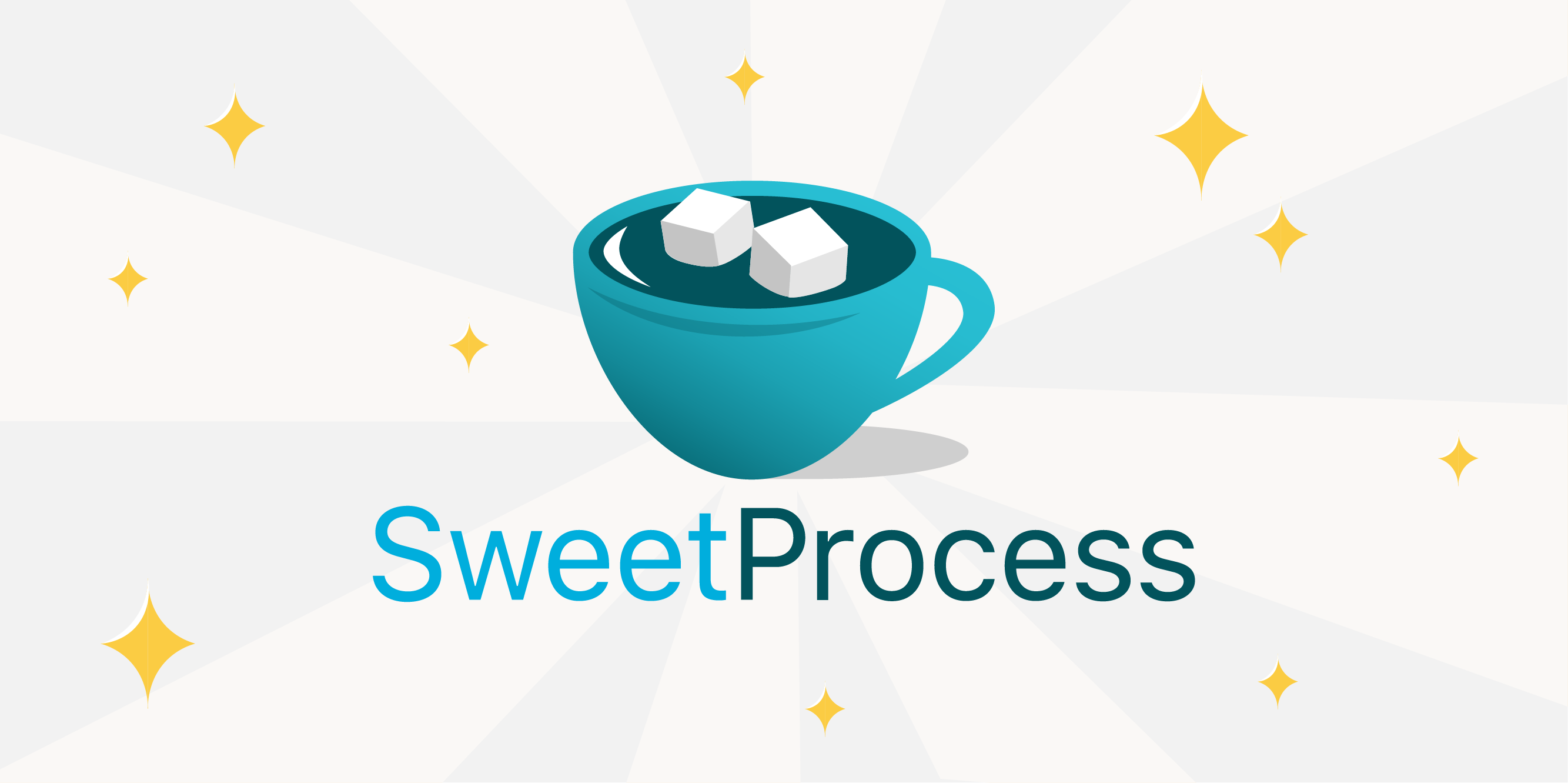

Whether you manage a team or hire your first employee, SweetProcess is your go-to knowledge management platform. SweetProcess is a business and workflow management software that allows you to focus on growing your business by helping you document and manage your company’s standard operating procedures, processes, people, and tasks in one place.
Key features:
- Audit management
- Collaborate
- Data capture
- Image editor
- Business performance management
- Standard operating procedure (SOP)
- 14-day free trial, with a starter pack beginning at $99/month for a team with up to 20 active members.
Confluence

Confluence is a widely used knowledge management system with a single knowledge repository, version history, permission-based access, and collaboration tool.
Key features:
- Business process manager (BPM)
- Powerful search tool
- Built-in manager
Document360
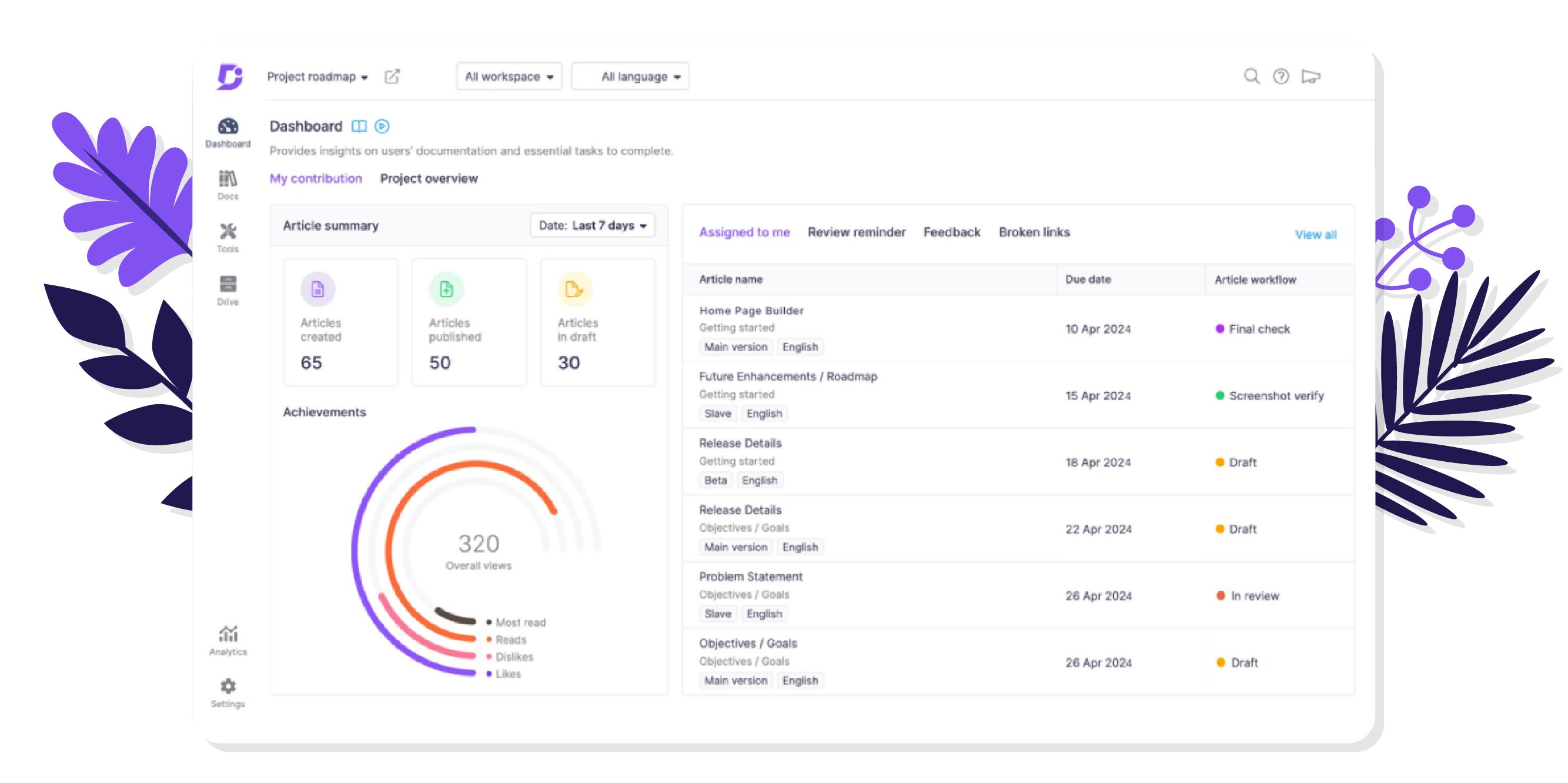
Document360 is a self-service platform to build, share, and manage knowledge base, product documentation, manuals, SOPs, wikis, and beyond. Its knowledge base is a sophisticated portal for content producers, equipped with a modern editor, category manager, analytics, and more.
Key features:
- Document tagging
- Article version history
- Content migration
Want to see Document360 discussed side-by-side with other knowledge documentation tools? Explore Bloomfire Alternatives.
ProProfs

ProProfs Knowledge base software is a simple yet powerful tool that can be used as a wiki or customer support for customers with ready-made templates to help businesses build a knowledge management system.
Key features:
- Security controls
- Multilingual support
- Branding and knowledge management system customization
Trainual
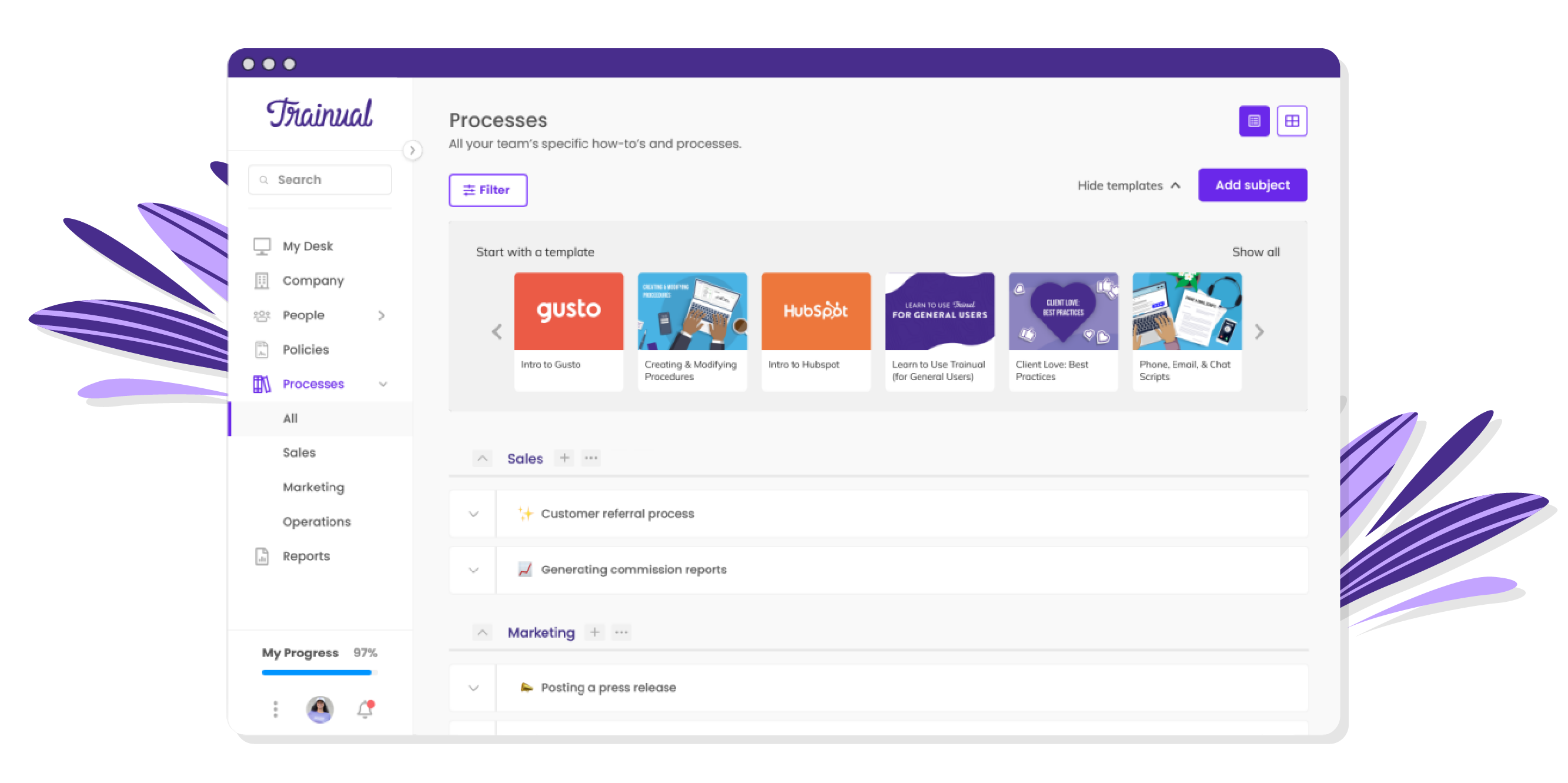
Trainual is a comprehensive standard operating procedure (SOP) software designed to streamline and facilitate the scalability of your business operations. It puts all your company’s policies, processes, and SOPs for every role and responsibility in one place.
Key features:
- Training Management
- Searchable & Trackable
- Employee Handbook
- Employee Onboarding
- Task Management
Freshdesk

Freshdesk is a robust feature-rich, powerful knowledge management platform that can be used to manage, curate, and share company knowledge for both employees and customers.
Key features:
- Flexible hierarchy
- Access controls
- Powerful document editor
- Built-in SEO options
Helpjuice
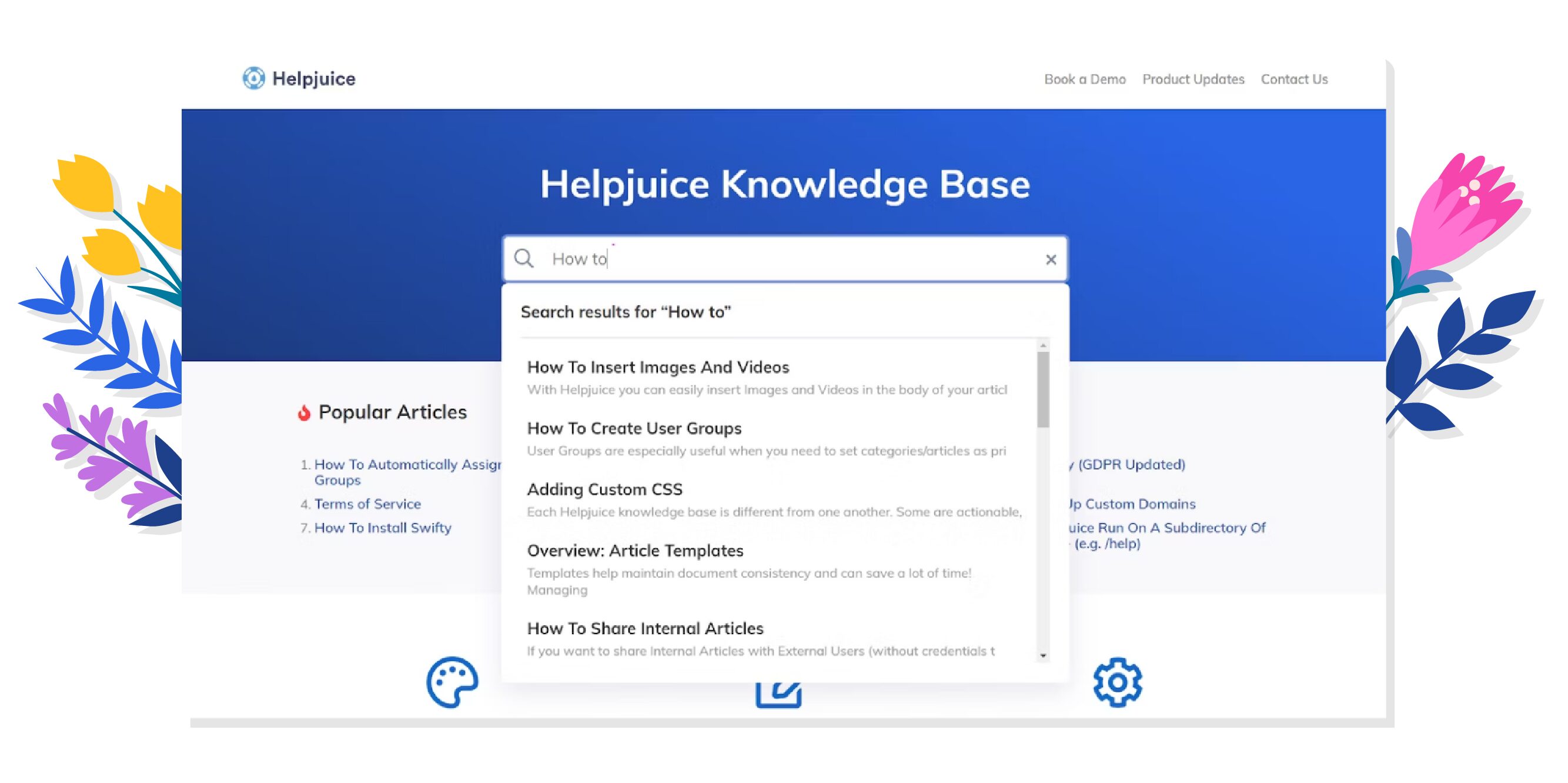
Helpjuice is a knowledge management tool that boosts a range of features that help businesses customize their knowledge base to curate and share content with end-users.
Key features:
- Team collaboration
- Advanced KM analytics
- customization
Explore HelpJuice as an alternative to Guru in this in-depth post
How to Measure the Effectiveness of Your Knowledge Management System

For businesses, knowing how to build a knowledge management system is essential, but the ability to measure the effectiveness of your knowledge management program is equally important. Here are some key metrics to consider:
Compliance and Security
Security and compliance are essential for ensuring your knowledge management system aligns with industry-specific standards and security protocols. Metrics such as adherence to industry regulations, data protection measures, and the prevention of unauthorized access to your knowledge repository are all evaluated in this category.
User Engagement
The user engagement metrics lie at the heart of any KMS. It tracks metrics like active users, login frequency, number of contributions and interactions with knowledge articles, and the duration of user sessions. The higher the engagement, the more valuable your resources are actively utilized by your teams.
Frequency of Content Creation and Update
These metrics measure the number of articles created, the frequency of updates, and the relevance of the information shared, and the average number of posts per day by unique contributors. A good knowledge base reflects a commitment to staying current.
Positive Feedback
Measuring the user experience through feedback mechanisms is a clear way that the system is being utilized. Positive feedback indicates user satisfaction and effectiveness of your KMS while negative feedback may signify poor quality of information.
Training and Onboarding Metrics
The goal of any effective KMS is to streamline training and onboarding processes for your business. These metrics include the time taken for onboarding, readiness through learning, the success rate of training programs, and the ease to adapt by new team members.
Ease of Search
KMS administrators should always observe and analyze the effectiveness of search results. The metrics here are search engine usage, average search time, successful searches, user feedback on the ease of finding relevant information, number of searches performed, number of highly rated searches performed, and user rankings.
Optimize Your Business Operations with Knowledge Management Systems

Increasing efficiency, cutting costs, and streamlining your business operations requires implementing robust knowledge management. With a knowledge management system, employees, customers, and business partners will spend less time searching for information, resulting in higher productivity and optimized business operation. A well-executed knowledge management system not only increases efficiency but also equips your teams with the technological tools to adapt swiftly to change, break information silos, collaborate seamlessly, and deliver exceptional results.
One of the major knowledge management solutions to consider is SweetProcess. SweetProcess is a versatile tool that simplifies the creation of knowledge bases, FAQs, help centers, documentation, processes, and SOPs, and offers a comprehensive suite of features that support content creation, management, and user engagement. With 100+ settings and integrations, detailed reports, and advanced user management, SweetProcess is a robust solution for both small and large business entities seeking to enhance their knowledge management processes. You can start improving your business processes today by signing up for a free trial of the SweetProcess knowledge management system.

